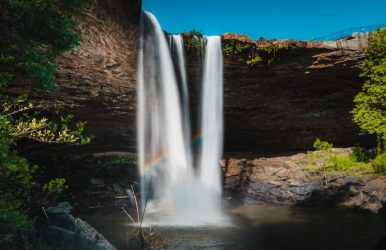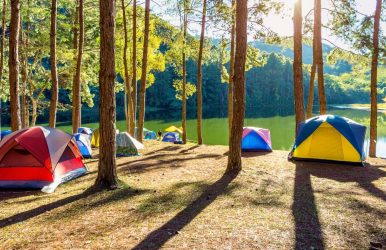Alabama Travel Guide
BY Abdul Aziz Oct 26, 2021
Are you in search of an interesting vacation spot? That has breezy orange beaches, amazing, inspiring civil rights history, and a charming lifestyle. Alabama comprises wonderful sights of museums that tell the tales of the struggles and conscious movements. To bring the changes, nevertheless, the state is a home for beautiful nature and tasty cuisines. See our Alabama travel guide and plan your holiday tour accordingly. Explore barbecue restaurants, exquisite breweries, wineries, and waterfalls not forgetting the ultimate seashores, Enjoy golf and hiking in Birmingham. At Florence, the beautiful single-story house the Rosenbaum House designed by Frank Lloyd Wright is the only one in entire Alabama. Alabama travel guide is entirely giving the details of the popular barbecue trail on the streets of Alabama. Click to find out more about the fabulous travel destination. 5 Cool Places To Visit In Alabama Are you a lover of unusual surprises? Look at the Alabama travel guide and choose your next destination where you want to spend your holiday destinations this year. Here are the names of five popular destinations in Alabama. 1. Gulf State Park: Lying on the Gulf of Mexico in southern Baldwin County is a heavenly feeling among all Alabama travel guides. This beautiful recreational place is spanning over 6,500 acres. This massive park has serene views in marshland, rustling streams, three spring-fed, fresh-water lakes: Lake Shelby, Middle Lake, and Little Lake, and pine forests are naturally beautiful tourist places. If you are an adventure sport lover or someone who is looking for camping in beautiful landscapes lined with lush greenery being closest to nature, this is the place to be. The camping ground in the park is nearby the white sand beaches close to the Alabama coastlines. It has several campsites and great trails to have strolls. There are camping places and facilities like cots, shelters with porches, uninterrupted water supply, fireplaces, and bathrooms. For enhancing, the customer delights. There are several other amenities for the visitors like a laundry facility, swimming pools, air-conditioned bathhouses, tennis courts, volleyball play area. It is a pet-friendly place, so you can get your furry pals and have a great vacation. 2. Cheaha State Park: One of the amusement parks covering 2,799 acres comprising Cheaha Mountain which is one of the stunning sightseeing places as it is the highest peaks in the entire state. It is an impeccable journey to the mountaintop to escape the hectic lifestyle and dive into relaxed nature. Like these camping grounds, you are going to find much more camping ground in the Alabama travel guide. The camping ground is a perfect getaway with bliss. Planning a vacation is simple as there are many restaurants, lodgings, and resorts with modern facilities. Enjoy some beautiful trails for hiking and camping, like Cave Creek Trail from Cheaha. Trailhead is a 10.8 km trail with an entry fee. The popular hiking trail is going through Cheaha mountain via Lake trail – 5 km roughly. Other trails include Blue Mountain via Pinhoti Trail, Pulpit Rock, Mountain Laurel, and Fisherman's Trail are also popular among the tourists. Additionally, there are waterfall trails - Cheaha Falls, High Falls, and Devil's Den making it a complete package for camping. 3. U.S. Space and Rocket Center: A place that no one should miss in Huntsville is theU.S. Space and Rocket Center. It is an inspiring and interesting scientific place that offers a great deal of learning and knowledge to the visitors. Among the Alabama travel guide’s these wonderful exhibits, spacecraft displays are the world’s largest unforgettable live and interactive walkthroughs and presentations. These amusing science and technology developments are a must-see especially for children as they can learn and plan a career. National Geographic Theatre or the Spacedome IMAX show elaborate multimedia presentations, also visitors are allowed to have a peek at the model of the International Space Station. All of us must have seen parks and flower beds, but this space center has a peculiar arrangement of rockets and missiles displayed in the park. There are 27 rockets and missiles in the park along with them. You can also see the gigantic propellers of space rockets. Making it a must–visit in the travel itinerary gives you a spectacular experience of museum simulators- these are instructor-led training by astronauts; the unimaginable feeling of mars surface and crawling on it teaches the kids motion and immersion along with an understanding of weightless travel and free fall. 4. Mobile Bay: Apt for a historical journey with amazing scenic views that are located through the Gulf of Mexico, Mobile Bay is a famous tourist attraction that sets apart the travel expedition at the wonderful coastline of Alabama. This place has a collection of picturesque beaches and places to state the history with a jaw-dropping experience that every visitor loves. The island that stands as a barrier - Dauphin Island comprises a small cute town where the tourists can explore the glorious architectures of the past - the historic Fort Gaines. It has lakes of freshwaters which are popular among the tourists for swimming and relaxation also it has the beautiful Audubon bird sanctuary. The mesmerizing town of Fairhope is a tourist destination that is present along Mobile Bay on the eastern coastline. The place is a great recreational area among the Alabama travel guide. You can experience thrilling adventurous activities like water sports, fishing, tennis, golf, cycling – so for the ones who love outdoor sports, this place offers the best fun-filled activities. The nature enthusiasts have their share of exploration at the Weeks Bay National Estuarine Research Reserve with a variety of habitats. Have fun with beautiful trails for hiking and biking. 5. Orange Beach: Popular as the hub for water activities, orange beach is a city in Alabama situated on Wolf Bay. A place loaded with adventure sports and a refreshing vacation spot for singles, couples, and families. So, what are the things you can expect here; well, you can go fishing, swimming, hiking, camping definitely indulging in some flavourful fine dining at beautiful restaurants that offer authentic and fusion culinary art. For the adrenaline rush experience among all Alabama, travel guide the parasailing at the orange beach can accommodate three flyers, fall in love with the amazing flight. Watch the dolphins by amazing cruise rides. Aside from the water sports experience, great taste with shrimps, crabs, oysters with seasonal flavors commonly stir-fried and grilled at some of the notable restaurants like Ruby Slipper Café known for the bacon pancakes, toasted pecans, and caramel sauces. City donuts bring different variations in donuts from chocolate and vanilla to maple-glazed and blueberry. Other famous restaurants for exquisite seafood are Cosmo’s Restaurant And Bar, Fin and Fork, and Tacky Jacks. Frequently Asked Questions (FAQs) Why does Alabama use white Barbeque sauce? This is a northern Alabama thing, you have to get used to it. The Big Gibson barbeque is white and tastes as good as the red one or even better. What is a mulet toss? When Alabamians and Floridians get together, they play this game of tossing a mullet and it’s a fish that they throw in the water. Do grits come with every meal? You are asking this question may be because you liked it or maybe you did not. The answer is no, Alabamians don’t have it with every food, though most of them. Are tornadoes frequent in Alabama? Yes, you will have to deal with the tornado storm if you are planning to stay there. The storms in Alabama can get crazy. Wrapping It Up: Alabama travel guide is the best place where you are getting an entire tour plan for Alabama. When you are searching for a tourist place with a unique combination of natural beauty and modern cultural effects. This is the perfect place where you are getting both of impressions. Cahaba river to the orange beach, everywhere you are going you feel the beauty of nature. So what are your experiences? Do not forget to share your traveling experiences with us? Read Also: Top Places To Visit In Italy On Your Next Travel Escapade How To Plan A Best One Day Trip To Atlanta With Family 10 Amazing Things To Do In Medellin Unmissable Attractions In Surabaya When In New York; Don’t Miss Out On These Things












